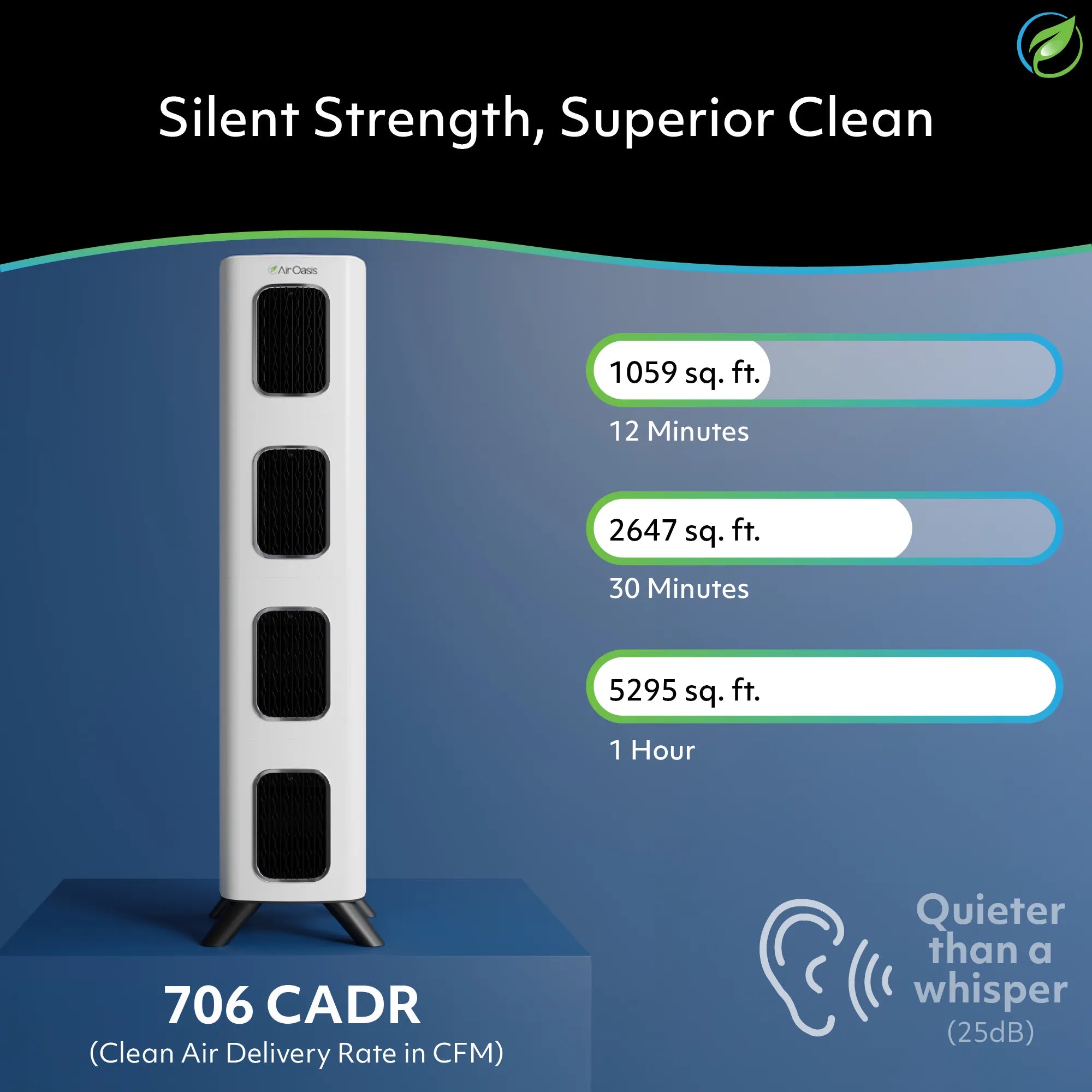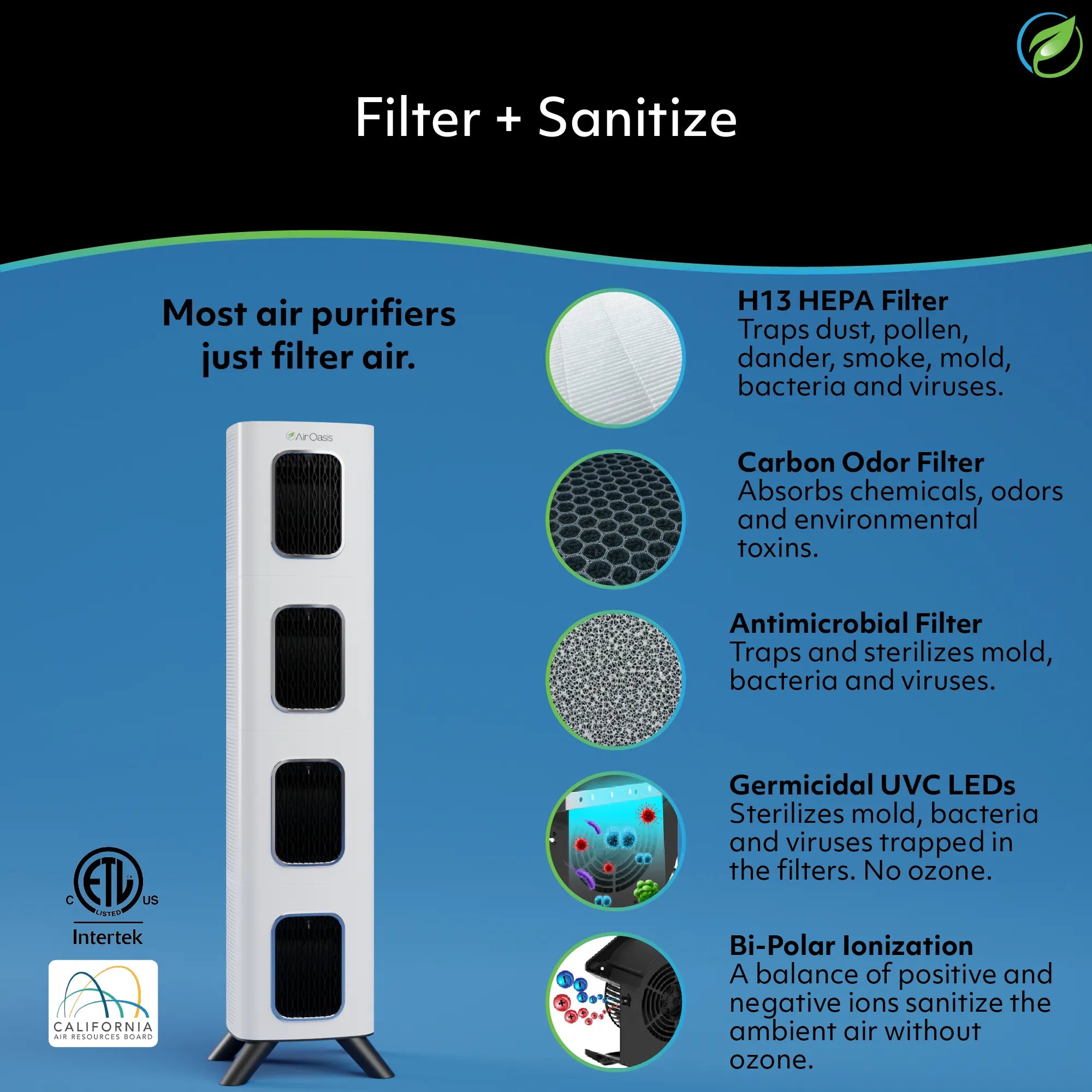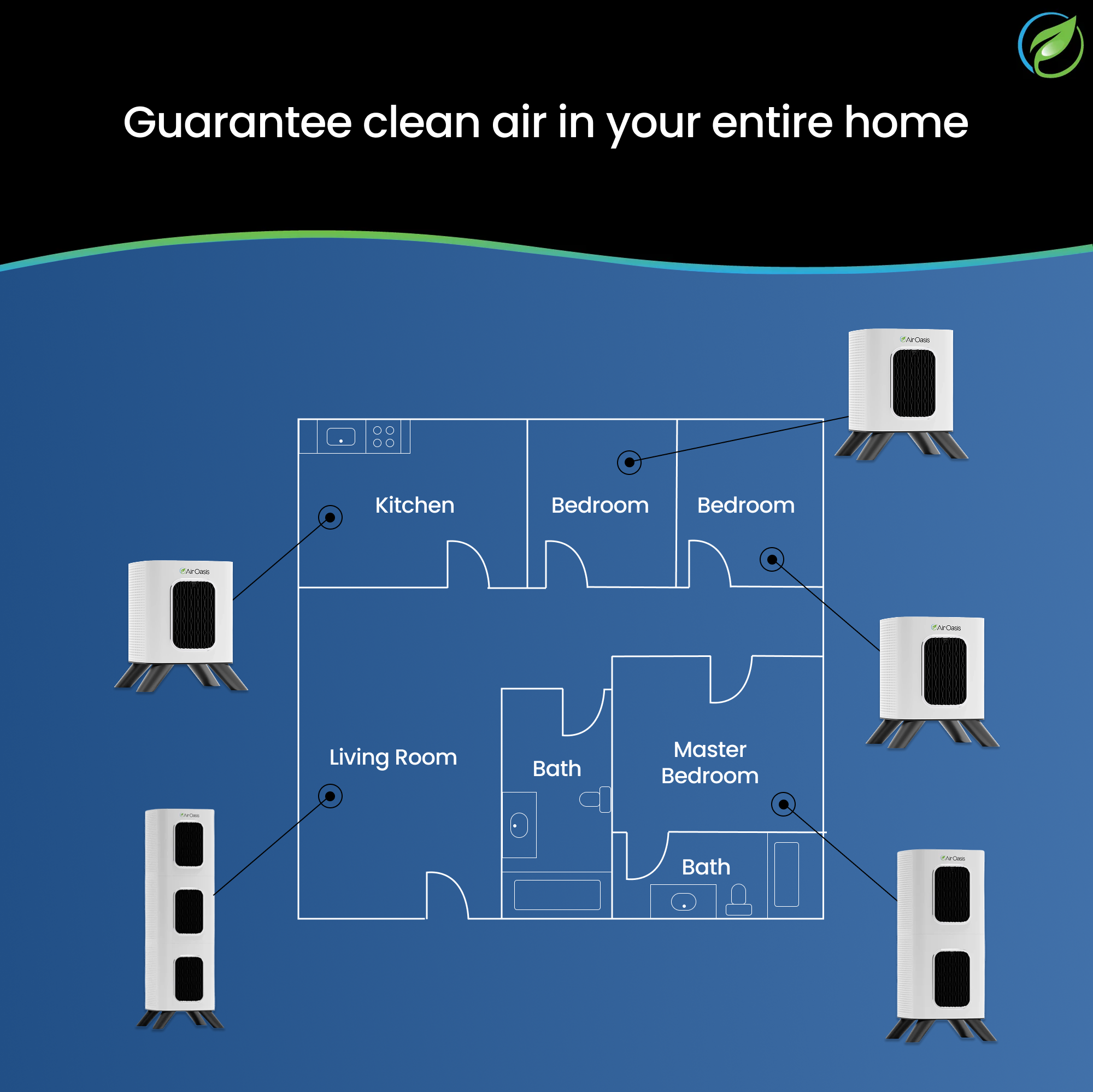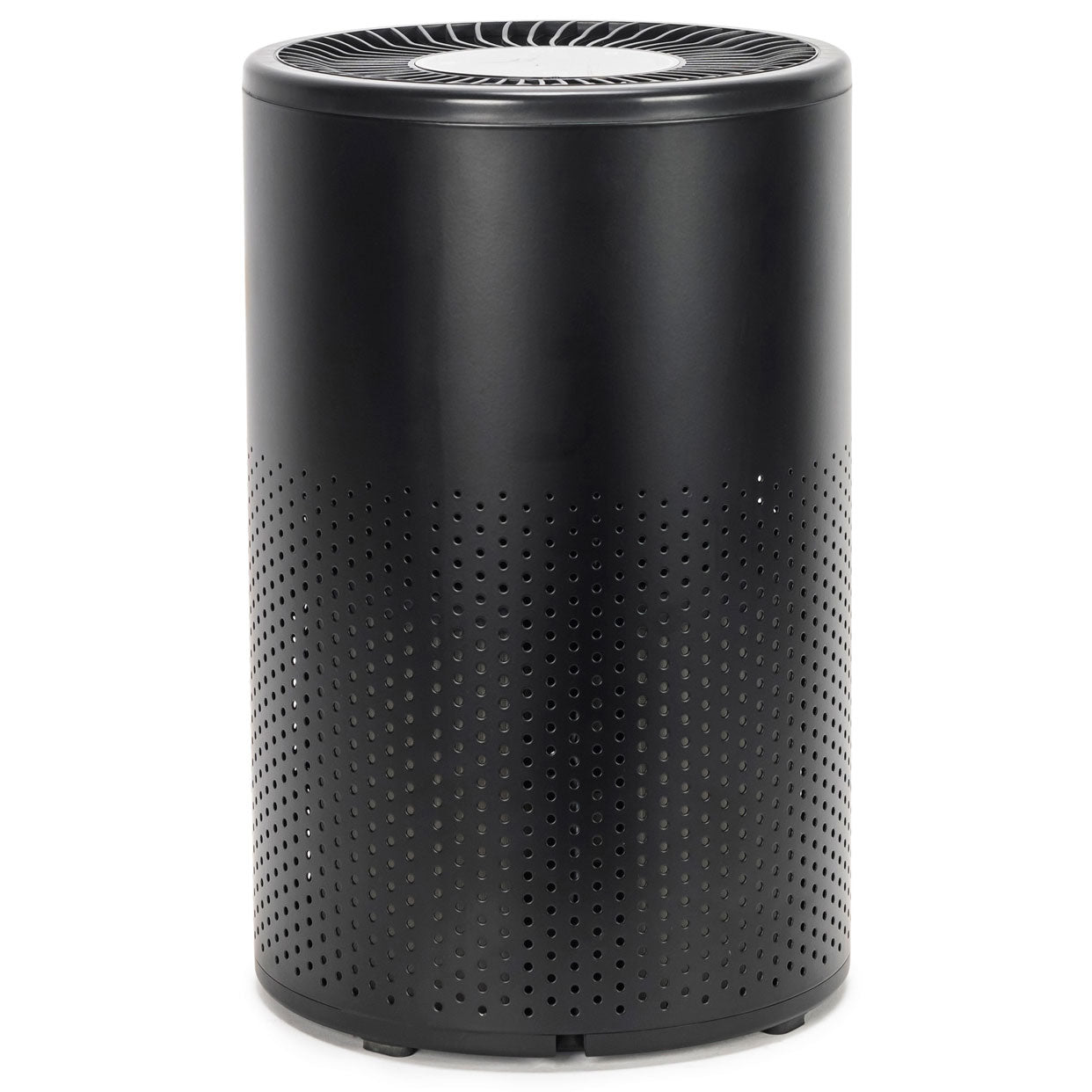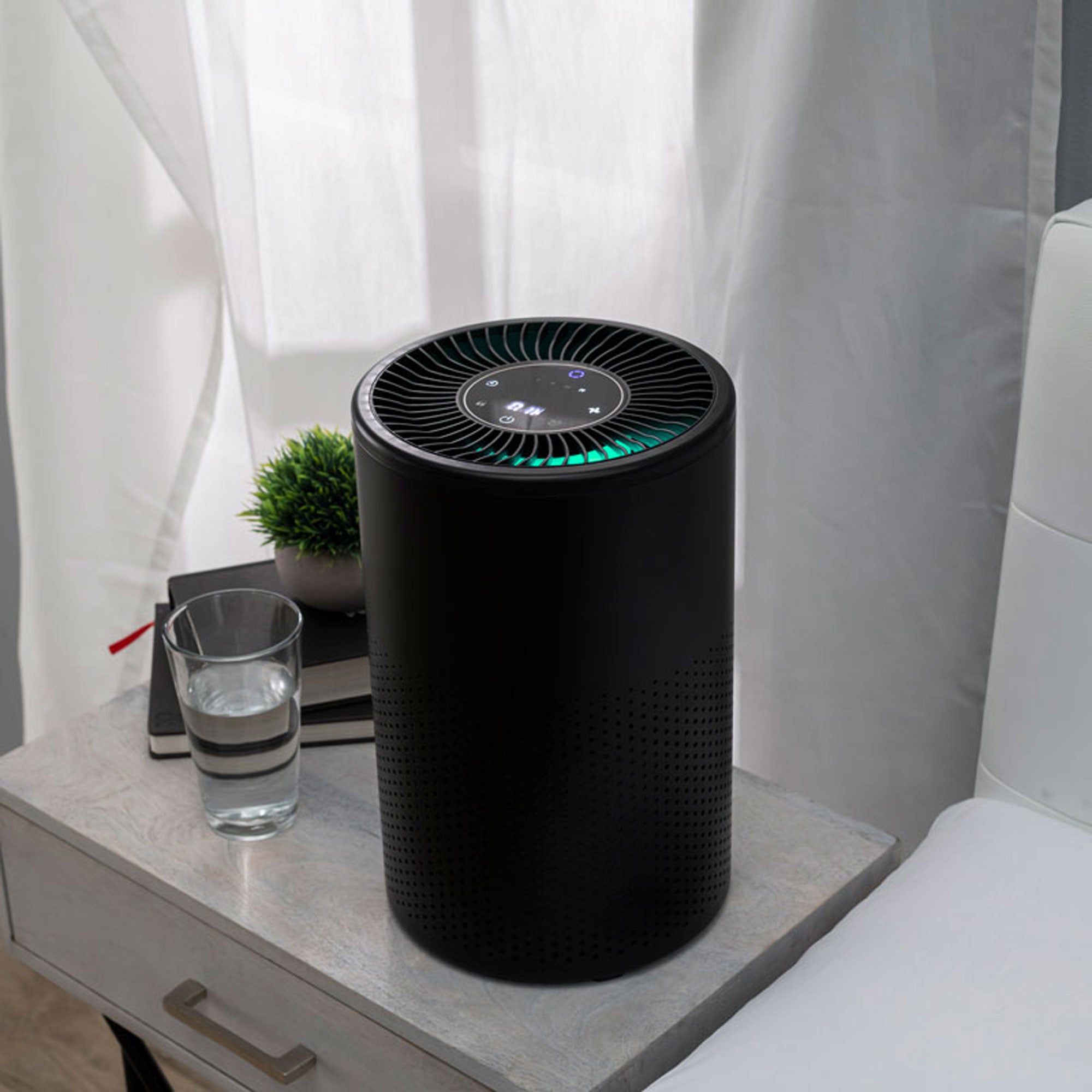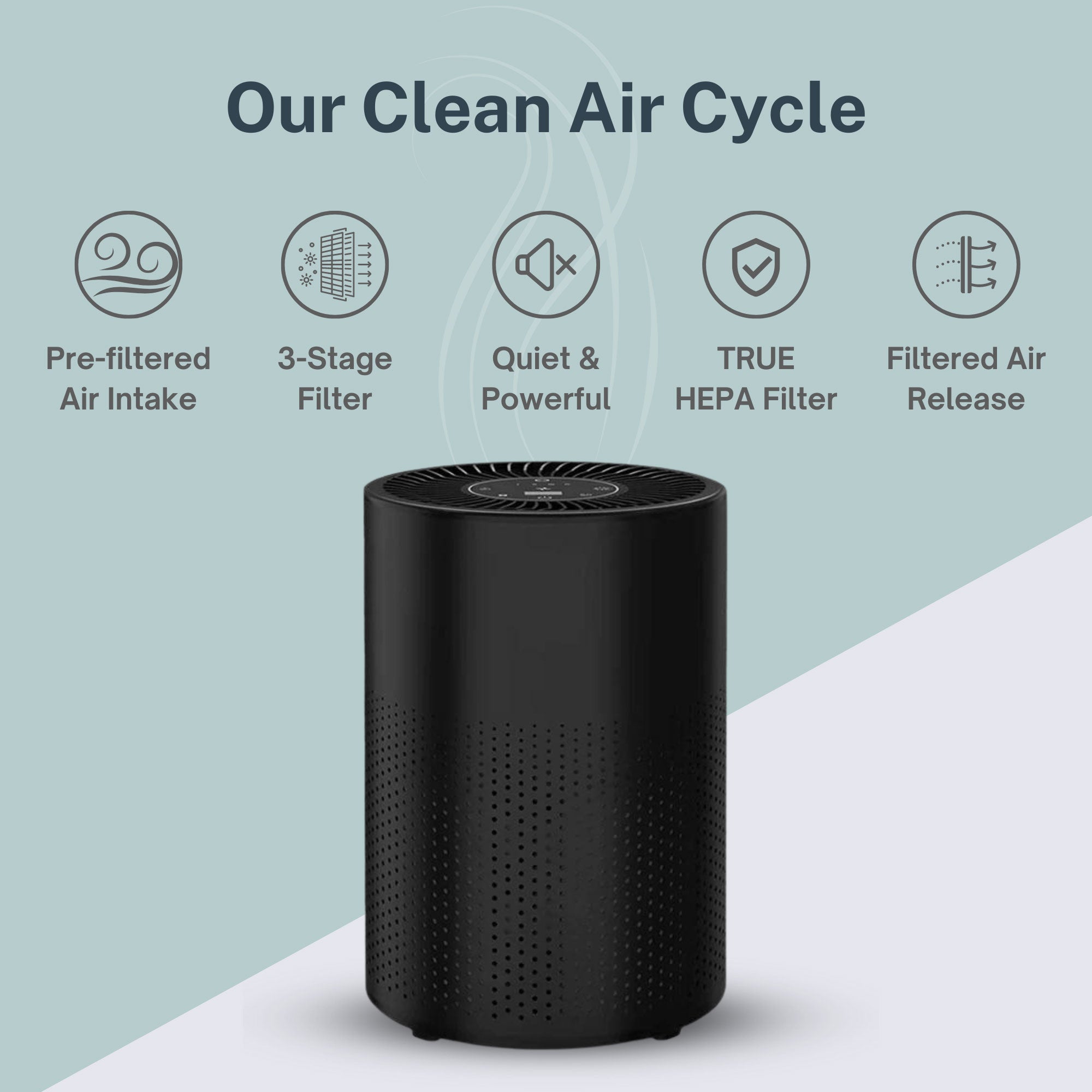It's starting to seem like we live in an age of endless health risks. The truth is, there are environmental factors that impact the spread of viruses and bacteria. First, let us say, as humans who care: you should not give into fear or anxiety. Those impulses undermine your well-being. Knowledge is power, and we want you to be well-informed about not only how viruses and bacteria spread, but what you can do about it.
Let us assure you: there are people out there (like us) who specialize in creating devices and systems that deliver real results for your health. We are working tirelessly to innovate, refine our products, and ensure that we do everything in our power to provide you with cleaner air in your home, office, or school. It's our mission. To that end, we want to make sure that you understand the air purifier technology that combats viruses and bacteria.
Most of us understand the rudimentary principles behind how viruses and bacteria spread through airborne droplets, but let's make sure we really get to the facts. This piece will review the scientifically understood dynamics of airborne transmission of viruses and bacteria, and how air purifiers for viruses and bacteria can reduce your risk of exposure.
Shop by concern: review the best air purifiers for viruses and bacteria on this page, and check out our FAQs about viruses, bacteria, and air purifiers.
Here's what we'll cover:
- Airborne Transmission of Viruses and Bacteria
- How Viruses Spread
- How Bacteria Spread
- Indoor and Outdoor Air Quality
- Air Purifier Technology for Viruses
- Air Purifier Technology for Bacteria
- Best Independently Tested Air Purifiers
- Air Purifier Certifications
- Find an Air Purifier for Viruses and Bacteria
Airborne Transmission of Viruses and Bacteria
A couple years of mask wearing has made most of us keenly aware of the fact that viruses and bacteria can be transmitted through airborne droplets. When sick people cough, sneeze, or talk, very small particles that contain viruses or bacteria are released into the air. If you're close enough, you may inhale these and the particles will enter your body.
Viruses and bacteria have different structures and infect the body in different ways, so let's divide them up.
How Viruses Spread
Viruses are a genome, coated with protein, and the infectious virus particle is a “virion.” There are different types and shapes of viruses and their highest priority is to protect the nucleic acid genome at their core. This self-preservation instinct leads them to enter a host cell and replicate. Some viruses reproduce quickly, within eight hours or so, and others take 72 hours or more.
As we all probably know from watching the news, viruses can also evolve and mutate, especially if they're threatened with destruction. Rapid multiplication and general unpredictability makes it hard to get rid of a virus once it's attached to you. It's one of the reasons antibiotics don't work against viruses.
Viruses don't always live and die in a single host. The most common way viruses spread from person to person is through exhalation: the tiny airborne particles (aerosols) breathed out through your mouth and nose. Anyone within six feet is at risk of inhaling these and having the virus attach/replicate inside them. Because of the aforementioned reproduction cycles, some people may not even realize they have a virus inside them and spread it while they are still asymptomatic.
It stands to reason that, since viruses are spread through the air, dealing with air quality is a primary approach to reducing widespread infection.
There is a growing body of research on air purifiers and viruses, some of which we've summarized for you here: Do Air Purifiers Help With COVID-19?
How Bacteria Spread
Bacteria are found everywhere on earth. They are the single-celled organisms that endure all kinds of conditions. Your body is full of bacteria. In fact, some researchers estimate that the human body has more bacterial cells than human cells.
There are four types of bacteria: bacillus, cocus, vibrio, and spirillum. Broadly speaking, bacteria are classified into gram-positive bacteria and gram-negative bacteria.
The good news is that most bacteria isn't a problem, and some types of bacteria are important to your bodily functions. There are a small number of bacterial species that do cause disease — such as E. coli, listeria, norovirus, and salmonella — and strains of these can become antibiotic-resistant.
Bacteria reproduce quickly and make you sick when they release toxins inside your body. You can be exposed to bacteria in numerous ways: through any openings in your body (including wounds), and through inhaling airborne droplets that have bacteria in them.
As the world has grown more aware of the power of air purifiers to fight illness, there has been more attention paid to how air purifiers get rid of bacteria in the air. To investigate that further, read Do Air Purifiers Kill Bacteria?
Both viruses and bacteria can be transmitted through the air and make people sick. If you are concerned about the spread of these, learning about indoor and outdoor quality is key.
Indoor and Outdoor Air Quality
To put it very simply: there are two arenas in which everybody exists — outdoors and indoors. Both outdoor air quality and indoor air quality can impact your health.
Outdoor air quality
Outdoor air quality is affected by everything from natural conditions (local flora, fauna, as well as disasters, like wildfires) and manmade dynamics (factories, construction sites, motor vehicles, etc.).
How do you measure outdoor air quality?
Outdoor air quality is measured by the Air Quality Index, also known as the “AQI.” The index calculates the pollution in the air in any given area. It tracks the five major pollutants: nitrogen dioxide, sulfur dioxide, carbon monoxide, ground level ozone, and airborne particles/aerosols.
Scores range like this:
- Good (green) = 0-50
- Moderate (yellow) = 51-100
- Unhealthy for sensitive groups (orange) = 101-150
- Unhealthy (red) = 151-200
- Very unhealthy (purple) = 201-300
- Hazardous (dark red) = 301-500
The report comes from satellite data, including the NOAA GOES-R and Joint Polar Satellite System.
Indoor air quality
Indoor air quality is affected by numerous factors as well, including your location (because outdoor air gets in), age of the home, home HVAC/air systems and vents, furniture, pets, family members, cleaning products, paint, and more.
How do you measure indoor air quality?
Indoor air quality can be measured using something called a VOC (volatile organic compound) sensor. Sensors like these detect chemicals, such as formaldehyde, as well as ketones and other components that contribute to indoor air pollution.
You may also find that high-tech air purifiers (like the iAdaptAirⓇ HEPA) have built-in air quality monitoring. Lights or indicators may show you the quality of air in a given space.
It is helpful to monitor indoor air quality, but measuring dangerous gasses or pollutants is about as far as VOC sensor technology goes. Nothing commercially available to the average individual can detect viruses or bacteria contained in droplets in the air, which is why it's vital to look into air purifiers.
Air Purifier Technology for Viruses
The best air purifier for viruses addresses the way a virus functions and the way it spreads. A High efficiency particulate air filter (HEPA filter) is one piece of technology that makes air purifiers effective in preventing airborne transmission of viruses. HEPA filters are always a good strategy for removing very small particles from the air, but there are two other kinds of air purifier technology that specifically combat against the spread of viruses.
UV Light
Coming to the forefront in the last couple of years, the ability of UV light to decontaminate surfaces and even the air is well proven. Industrial UV air purifiers have been in operation in high-risk areas like hospitals for years. UV light can provide ultraviolet-C radiation and disinfection, according to the FDA, and are useful for air purification when included in a multistage filtration system.
It isn't widely recommended to just use a UV lamp in a room to get rid of viruses. These light waves need direct exposure to decontaminate, and UVC radiation could pose health risks or even burns with prolonged exposure to humans. High-tech air purifiers have UV lights contained inside, safely obscured/separated from human contact, but positioned as part of a multistage filtration process.
Check out the IonicAir™ UV Purifier here.
Silver Ion Filtration
A second air purifier technology in the fight against viruses is silver ion filtration. Extrapolated from technology developed by NASA, silver ion filtration is a molecular process. A blanket of negative ions are released into the air, which attract positive ions. These bond and weigh down particles that are floating through the air.
This is a sophisticated approach that only a few companies have developed for residential or commercial air purifiers. Air Oasis is one of those few, and you can experience the power of this kind of air purifier technology in our iAdaptAir®, which comes in three sizes to fit your space.
To understand more about ionization or ionic air purifiers, read our article on Ionic Air Purifiers.
Air Purifier Technology for Bacteria
Getting rid of bacteria and germs in the air is a job for a HEPA filter. Well-known in the world of air purification technology, “high efficiency particulate air” filters are pleated mechanical filters that physically capture particles from circulating air.
Air is taken into an air purifier, forced through the HEPA filter, and the filter collects everything, down to 0.1 microns in size. Some are capable of going even smaller, which effectively takes care of droplets that contain germs and bacteria.
The key to a HEPA filter, carbon filter, UV light, bi-polar ionization, and any other air purifier is to ensure it has been independently tested. You shouldn't have to take the company's word for how well it works, because this precise tech needs to be expertly manufactured to perform well.
Best Independently Tested Air Purifiers
The best air purifiers for viruses and bacteria will be independently tested. This means that the manufacturer (like us) would hire a third-party, credible research company to perform independent tests to evaluate the efficacy and performance of the unit.
We have done just that.
Rather than restating all of those findings here, you can visit our Science page, which provides meticulous detail on the results of third-party lab tests for air purifiers and viruses, air purifiers and bacteria, air purifiers and mold, and more.
It is important that you search and find this kind of information before you buy an air purifier online or in a store. You want to verify that the air purifier can do everything it claims to do, especially when you're concerned about the spread of viruses or bacteria.
Air Purifier Certifications
There are a few types of clearances or credentials that you may see as you hunt for an air purifier for viruses or bacteria. Here are some of them:
1. FDA Cleared
This is a designation you may increasingly see on air purifiers, especially since COVID-19. The FDA puts air purifiers in the category of Class II medical devices. “FDA cleared air purifier” means that the manufacturer has given “valid, scientific evidence” that demonstrates that the product works for its intended use.
2. AHAM
The Association of Home Appliance Manufacturers has four certification categories that relate here: room air cleaners, room air conditioners, dehumidifiers, refrigerator/freezers. The air cleaning certification is referred to as AC-1.
3. CARB-Certified
The state of California Air Resources Board certifies portable indoor air cleaning devices. Manufacturers must undergo a verification process with this group to receive the certification.
We would suggest that the findings of third-party labs will shed the most light on whether a company can prove the performance of its products.
Find an Air Purifier for Viruses and Bacteria
When your goal is to protect your family, employees, and students, there's always room to improve indoor air quality. Everyone can benefit from cleaner air, especially when it comes to preventing the spread of viruses and bacteria.
It doesn't have to be a daunting task to find the best air purifiers for viruses or bacteria. At Air Oasis, we bring every available technology to the plate in this important fight to help you breathe easier. It's what we've dedicated our business to and we're happy to spread our knowledge related to finding the right air purifier.
If you are looking for an air purifier to prevent the airborne transmission of viruses and bacteria, shop ours now.




































